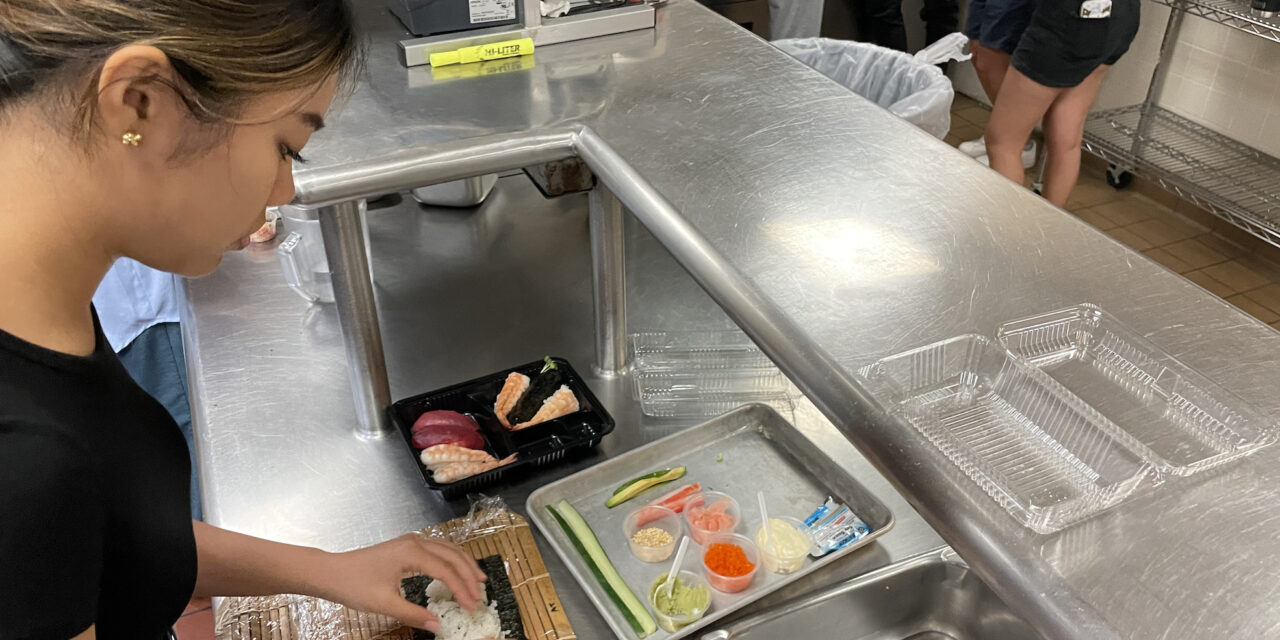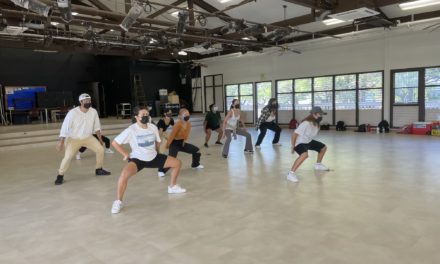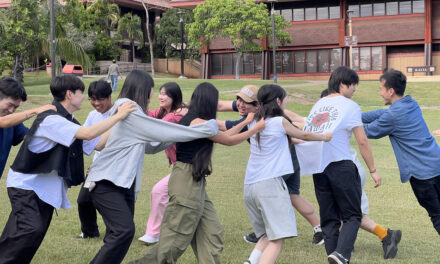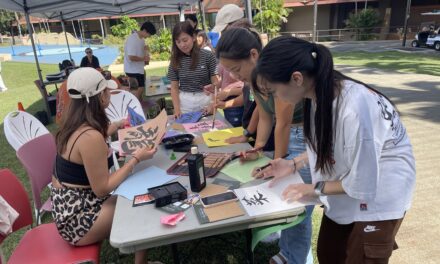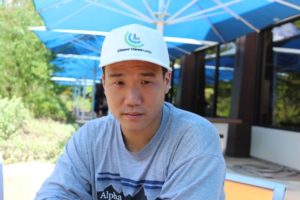Skye Enomoto, a Liberal Arts major, is pictured making her California uramaki. (Photo by Cameron Enomoto)
By Cameron Enomoto | Staff Writer
On Friday, Oct. 27, the Board of Student Activities (BOSA) hosted a sushi-making workshop for students in partnership with Chef Alan Tsuchiyama. The first 20 students who signed up were able to attend the workshop and learned how to make uramaki, gunkan, temaki, nigiri, and hosomaki. Tsuchiyama demonstrated how to make each kind of sushi and briefly explained the history of sushi as well as his own experience with the Japanese dish.

BOSA hosted its first sushi-making workshop with Chef Alan Tsuchiyama (Photo courtesy of BOSA)
“You should have good rice when you make sushi,” Tsuchiyama said. “You don’t want the cheap stuff. Sushi rice should not be too cold or too hot. If it’s too cold, it doesn’t taste good and no one likes to eat cold rice. If it’s too hot it won’t be good when we put the raw fish on top because it’s going to get too warm.”
Following Tsuchiyama’s demonstration, students entered the adjoining kitchen at 220 Grille where they worked at stations in pairs. All of the ingredients needed for each kind of sushi had been prepped by Tsuchiyama’s assistants beforehand, meaning that students were only responsible for assembling their own sushi.
The first sushi that students made was nigiri. Nigiri is one of the simplest sushi that consists of a pillow of seasoned rice and seafood topping either raw or cooked. For the workshop, students used tuna (maguro) and shrimp (ebi). Students also had the option of adding wasabi to the underside of the tuna and shrimp before placing it on the rice. Gunkan sushi, which translates to “battleship” in Japanese, was made with seaweed (nori), rice, and flying fish eggs (tobiko). A large strip of nori was placed vertically around the rice to create a small area for the tobiko.
“When cutting your nori, make sure you have the shiny side on the outer part,” Tsuchiyama said. “Shiny means presentation and don’t make your hands too wet either when handling the rice. We want damp hands, not drenched, that way the rice won’t stick to you.”

Students made uramaki, temaki, gunkan, hosomaki, and nigiri. (Photo by Cameron Enomoto)
Students made spicy maguro temaki, also known as hand rolls. Tsuchiyama explained that the fish should be cut and seasoned first before adding the sauce because it helps to heighten the overall flavor. Unlike nigiri and gunkan, the temaki is larger and cone-shaped. This allows the roll to be filled with rice and other toppings.
For the uramaki, which is an inside-out roll, students used imitation crab, cucumber, avocado, and sesame seeds. The rice is presented outside of the nori with filling on the inside and sesame seeds on top. Lastly, students made cucumber hosomaki. Hosomaki is the opposite of uramaki since the nori is on the outside of the rice, though both are made with bamboo sushi-rolling mats called makisu.
At the end of the workshop, students were able to take home their sushi and assisted with kitchen cleanup. Tsuchiyama encouraged everyone to share their new knowledge with friends and family to continue developing their sushi-making skills.
“Sushi is fun to make, and I showed my family how to make temaki so now they can make it themselves,” Tsuchiyama said. “It’s not super hard and you can use ingredients at home to make this too.”
While this is BOSA’s first collaboration event with the Culinary Arts Department, the turnout and input from BOSA member, Hedsey Rowa, suggest that events similar to this may be planned in the future.
“I think a good number of students signed up and everyone looked like they had fun,” said Rowa, the Public Relation Recruitment Officer for BOSA. “We have to go through the event feedback forms to look at all the responses, but I think BOSA might do more events like this.”

